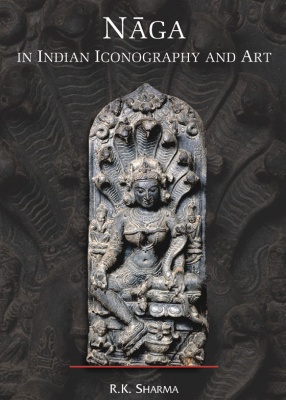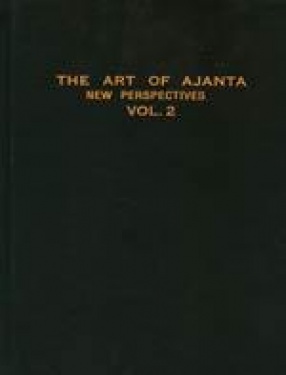Ophiolatry or serpent-worship (most commonly referred to in India as Naga cult) seems to have been one of the oldest and most widespread form of religion the world has ever known. The cult assumed a special significance and importance for India as in no other part of the world was it more widely distributed or developed in more varied and interesting forms. The problems associated with Naga worship comprise psychological, religious, sociological, political, iconographical, art and many other aspects and each aspect offers splendid scope of research. While handling the art and iconographical aspects of Naga cult in India, the present book has analysed to show how the cult was associated with the different religious systems of ancient India and how this association is reflected in the art and iconography of the respective religious systems-both brahmanical and non- brahmanical.
The antiquity of Naga worship in India may be traced to protohistoric times if not earlier. The seals and sealings of the Harappan times provide the earliest protohistoric evidence.
The concept of Ahi-Budhnya in the early and later Vedic literature is the germ of serpent worship in ancient India which takes a magnified form in the subsequent ages. During the millennium beginning with 600 BC, possibly keeping with the changing social conditions, not only were the new gods created, but the functions of the old gods underwent modification and alteration. Contact with the indigenous cults was responsible not only for the importation of new objects of worship, but also for assimilation of new mythologies in older cults. The Naga cult had, by this time, assumed the cult of the masses. How, in the changing circumstances, the different religious systems of ancient India made systematic attempts to wean people from the Naga cult into their own fold is an interesting story. Not only did they adopt some of the features of the Naga cult into their own faith but assimilated them. The result was that from 600 BC onwards we find all religious systems of India incorporating Naga as integral part of their creed. Not only the brahmanical cults like Vaisnavism, Shaivism, Saktism and their various forms admitted Naga into own religion, but even non-brahmanical religious systems like Buddhism and Jainism followed the practice. How in the iconography and art of each of these religious systems is Naga depicted in different mythological backgrounds is the subject matter of research incorporated in the present book.
Contents: 1. Origin and Antiquity. 2. Types of Naga in Indian Iconography. 3. Naga in Pre and Protohistoric Art. 4. Naga on Early Indian Coins. 5. Vaisnavism and Naga-I. 6. Vaisnavism and Naga-II. 7. Saivism and Naga-I. 8. Saivism and Naga-II. 9. Naga in the Iconography of Sakti. 10. Minor Hindu Deities and Naga. 11. Naga in Buddhist Art and Iconography. 12. Naga in Jaina Art and Iconography. 13. Naga as a Decorative Motif in Indian Architecture. 14. Epilogue. Index.








There are no reviews yet.